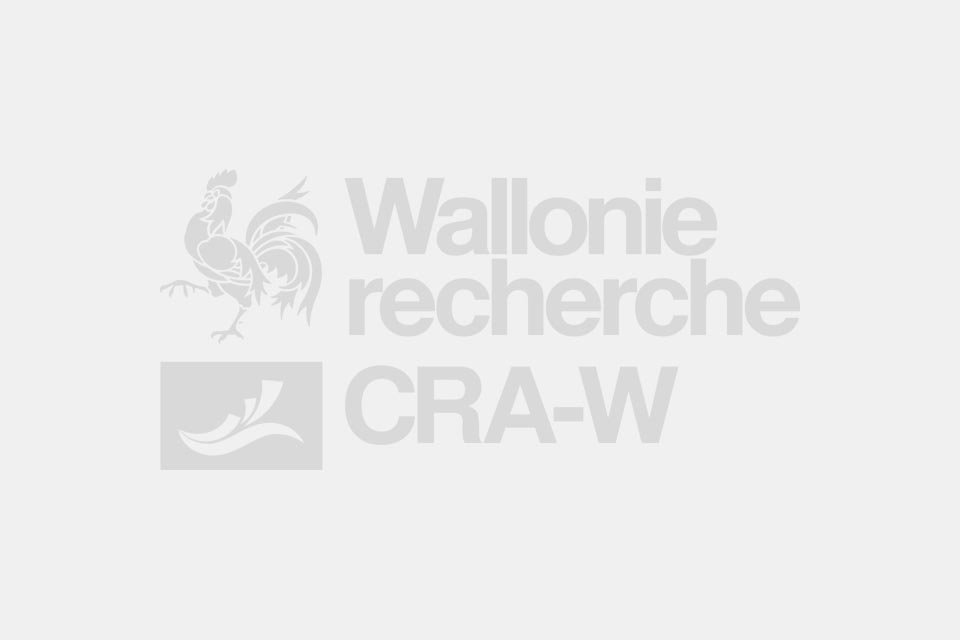Mise au point de nouvelles technologies de production d'arbres de Noël de qualité.
Development of new production technologies of quality Christmas fir trees.
-
-

fiche objectifs img 12775 2006 04 18 cra w fiche192 prj objectifs img 1

fiche res img 12775 2006 04 18 2cra w fiche192 prj res img
Previous
Next
Context
During the last thirty years, production of Christmas fir trees strongly developed in Walloon Region, ensuring an annual production of more or less 6 millions trees of which the three quarters are exported. However, producers of Walloon Christmas fir trees are facing an international competition increasingly harder. The marketing of a high and homogeneous quality Christmas tree surely constitutes, for our producers, the best way of taking up this challenge, by ensuring the consumer satisfaction while putting forward the quality of their product. Among the top-of-the-range Christmas trees, we privileged the Nordmann fir tree which has an increasingly important place on the market in relation with its characteristics (aesthetic, weak loss of needles) which make it a sound value. Objectives
Our work aims to support the Walloon Christmas tree sector in its quality and diversification efforts. In the aim of obtaining plants of homogeneous quality, a first stage consisted in selecting performing clones of Christmas fir tree and fixing them by grafting, thus creating a seed orchard. [image] Obtaining a material controlled under precise environmental conditions is interesting. It makes it possible to mitigate the insufficiency of seeds for a given source, to perfectly control harvest and especially to avoid the risks of contamination of the site by transfers of foreign pollens. This step fits in a production channel warranting the origin of the plant material in Wallonia. Parallel to the installation of seed orchards, we seek the means of accelerating the flower setting of the performing clones. Thus, we base ourselves on the flowering properties of hyperfloral Abies and on the assumption of a transmission of these characteristics to our remarkable trees by means of grafting. If the creation of seeds known as "synthetic” within the seed orchards can reduce the subjects heterogeneity, it is only by cloning, i.e. by vegetative multiplication that genetically homogeneous parcels could be obtained, thus offering the possibility of a completely rational exploitation. The first tests of propagation by cutting related to the origin and the period of taking of the cuttings. The greatest hopes to solve the problems of mass vegetative multiplication of the Abies nordmanniana selected clones rest however on modern technologies of "in vitro" multiplication and more particularly on the somatic embryogenesis. This plant regeneration technique is based on the capacities which have the cells to constitute a whole plant (comprising at the same time shoot and root) through various successive stages comparable to the zygotic embryo. Since no fertilization is implied, seedlings which come of it are in theory genetically homogeneous and in conformity with the parental type. Regarding Nordmann, we think that the propagation by cutting technique will judiciously supplement the modern multiplication techniques. The juvenile character obtained by the "in vitro " passage can be inductive of rooting ablities and it is allowed to think that this material could be used as stock plants on which producers would take their cuttings. Clonal tests from our seed orchards are also considered for the creation of multiclonal varieties. Results obtained
Cuttings Two types of cuttings were tested: wood cuttings from October to December and from February to April (semi-dormant), as well as the herbaceous cuttings of June. The cuttings taken in October-November and placed at the cold (+4°C) during 4 to 8 weeks before their insertion in beds gave us 35 % of rooting starting from 12 years stock plant. Nevertheless, the morphological aspect of the growth of these plants is often of plagiotropic type. A research based on the rejuvenation of stock plants is in hand. Somatic embryogenesis Currently, the various phases of the "in vitro" culture are practically controlled from mature seeds. Induction conditions of embryogenic masses as well as the proliferation and maturation of the somatic embryos up to their germination are applicable in a reproducible way to various reactive lines. Several of them are in phase of plantlet conversion.[image] To propagate selected types at the adult stage, the research of the induction conditions of embryogenic calli from old material has to be prolonged. The seedlings resulting from somatic embryos will be used to circumvent the genetic factor problem. Their explants will constitute the reference to study the embryogenic competence and its maintenance towards ageing. Sidely, works on cryoconservation, that proves to be necessary to the safeguarding of the embryogenic properties of the "in vitro" lines, are in progress. It will be used to preserve the lines during the period of the seedlings behaviour observation in field (growth, vigor, habit quality,….). Funding

